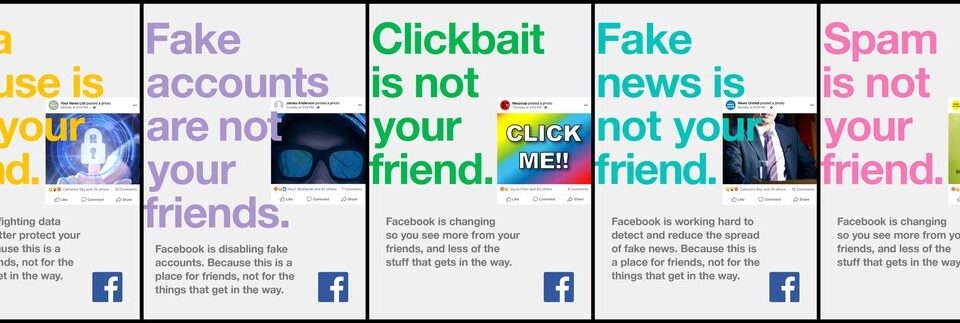

Posted In: Hidden by
Dan Howard,
June 29, 2018

In an era of fake news, questionable data ethics and muddied influencer guidelines, brand affinity almost feels at an all-time low. Consumers are cut-throat in their brand expectations, regardless of whether they’ve used them for 5 minutes or 5 years. Our belief? Billy Joel sang true in that it’s all a matter of trust…
What’s The Problem?
PwC’s Global Consumer Insight Survey reveals the challenge faced by most brands and retailers, with more than a third of people citing ‘trust in brand’ as one of their top considerations when making a purchase, aside from price.
Edelman’s recent Trust Barometer also reveals that only a quarter of the UK population trust social media as a news source, predominantly driven by the influx of fake news, offensive content and cyberbullying. The majority of people believe that brands need to do more to stop the spread of fake news by coming down hard on social platforms – there’s a real need for brands to adopt trust marketing strategies to combat this decline.
Is the Industry Doing Enough?
The way that traditional channels work alongside social channels will need to continue to develop in order to communicate more authentic brand messaging and ultimately, regain the trust of the public.
Twitter has taken steps to fight against cyber bullying and online abuse, having acquired anti-abuse technology provider Smyte. Historically notorious for streams of hateful posting, it’ll be interesting to see whether this acquisition changes the way people use the platform.
Facebook recently launched its global ‘Here Together’ multi-channel campaign that aims to address its pretty catastrophic run of issues. One being that they’re working to reduce the spread of fake news, an ad for which appeared on the back page of the Metro. The strapline read “Fake news is not our friend” and detailed how they’re working with more global ‘fact-checkers’ to combat the problem.

Images from Wired.com
Is there something here about consumers perhaps trusting paid-for print and outdoor advertising presence more so than an in-Facebook disclaimer? Would you sit up and take notice if you saw this in print rather than on your screen? It’s almost as if having it in blue and white on a page, in your hands, makes it ‘permanent’ and gives it a little more authority – the change in environment by which the media is consumed instantly demands attention – a bit like when you spot a familiar face out of context!
With Zuckerberg under scrutiny, the campaign aims to “get back to what made Facebook good in the first place” – friends. Cutting through all the negative press and getting back to basics. But is this enough to encourage users back onto the platform?
It also comes down to transparency – when things go wrong, how a brand reacts speaks volumes and will ultimately have an effect on its bottom line.
Customers don’t buy from companies they don’t trust, we’ve established that. Staring into the face of a crisis will bring with it its own set of new challenges but CEOs burying their heads in the sand is not a way to tackle them – just ask United Airlines, whose brand sentiment dropped from 91% positive to 68.9% negative overnight after “that” in-flight video footage emerged.
What Can Your Brand Do?
With trust being a key factor in everyone’s purchase decisions, how can brands ensure they earn customers’ trust and, more importantly, keep it?
Brand advocates are loyal and infinitely more powerful than any single ad campaign, with the majority of consumers trusting fellow consumer content more than branded content. The true challenge then is to reach a level of authenticity in your communication that allows trust to flow, naturally.
User generated content is a quick and easy way for brands to harness existing content that they know is of interest to their audience, allowing them to align their messaging with their audience, via the power of association. Social proof can be a strong persuasion tool and will contribute to the lifetime value of the customers you’re engaging.
And is there any reason your MD or CEO couldn’t take the reins on your social channels? (with some guidance, of course…). Your customers follow your brand on social because they feel connected to it and what better way to show your transparency and engage with them than by giving them access to the gal or guy at the top?
Consistency is key – remember that your brand comms need to be an extension of your brand message and values. If you haven’t identified your brand values, dedicate some time with not just the stakeholders, but a range of employees from around the business. Ask them what they feel it means to work for your brand and how this should be lived both internally throughout the company and outside in the consumer-facing world.
Key Takeaways
Earning trust in 2018 is tricky. Messages are convoluted, marketplaces are crowded, and consumers have more choice than ever before. And what’s especially important to remember is that trust isn’t earned overnight – a comms strategy needs to be authentic, honest, consistent and remain transparent. Anything less and it just won’t cut it with the social savvy consumers of today.